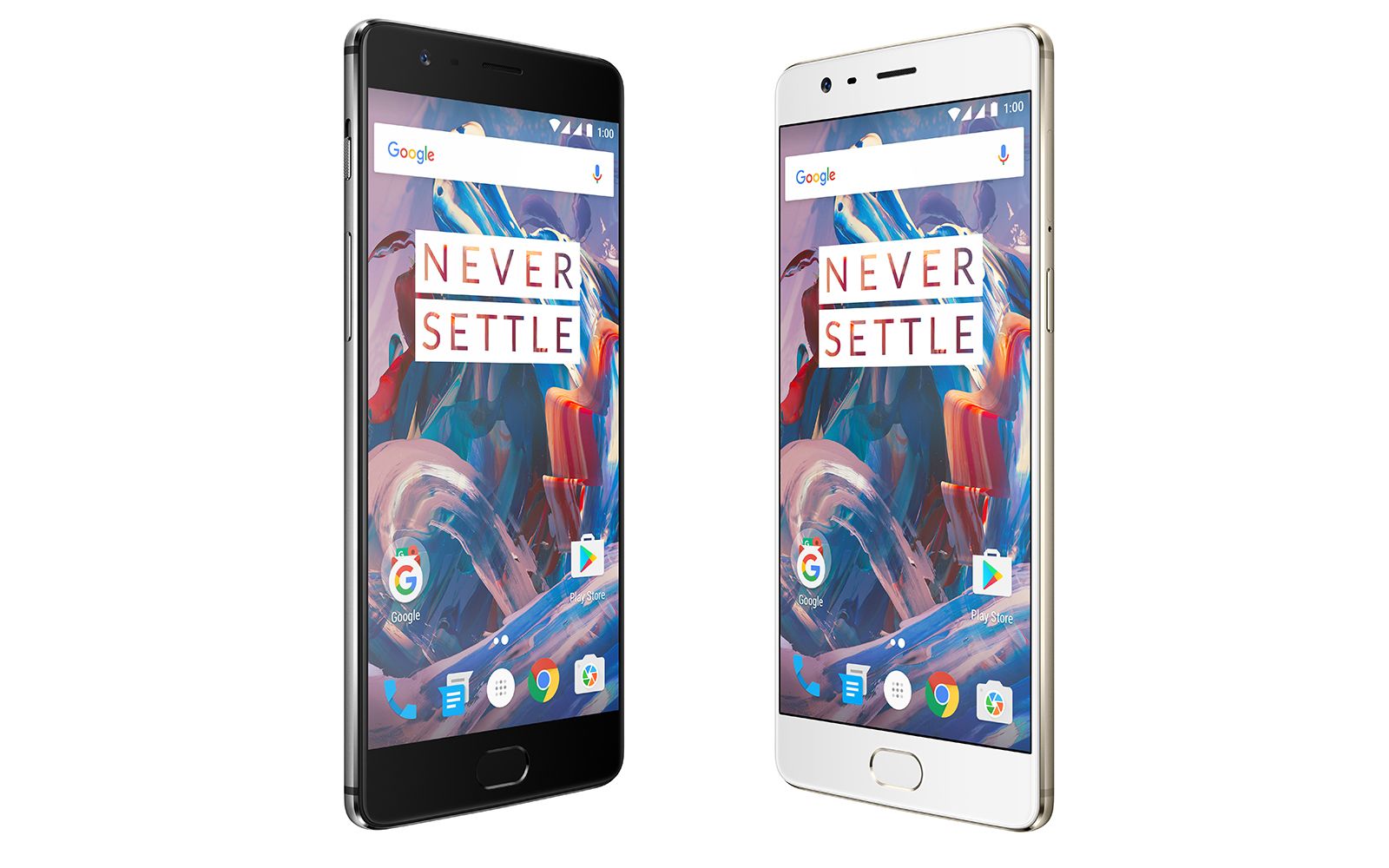OnePlus has just announced its next generation flagship smartphone, and continues in its tradition of releasing powerful devices at affordable prices. While some specifications look similar to the OnePlus 2, there’s definitely enough difference here to make it worth the upgrade.
Starting on the front, and OnePlus has opted to keep much of the same design as last year. It’s an all-glass panel with a pill-shaped capacitive home button with built-in fingerprint sensor beneath the display.
As for the screen itself, it retains both the 5.5-inch size and 1080p Full HD resolution of its predecessors, but makes the welcome change to AMOLED based technology. This means colours will be far more vibrant, and blacks will be far deeper.
For the first time, OnePlus has built the rear casing from anodised aluminium, which looks very much like the kind of design we’re used to seeing from the likes of HTC, Huawei and other Chinese brands. It has the antenna bands running along the top and bottom portions and plays home to the main camera.
The rear camera boasts a 16MP Sony sensor with phase detection autofocus (PDAF) and an f/2.0 aperture for decent low light shots and background blur. As you’d expect from a top-of-the-line phone, it can also shoot video at 4K resolution, and you photographers will be happy to see it also supports RAW files for higher quality images. The front camera is decent too; at 8MP and with large pixels, it’s designed to take good selfies even with terrible lighting.
There are a couple of really notable features on the OnePlus 2. Firstly, it’s powered by Qualcomm’s latest high-power processor, the Snapdragon 820. This is paired with a huge 6GB RAM and 64GB built-in storage to ensure you never run out of space, or memory for running multiple apps at once.
Secondly, there’s OnePlus’ Dash Charge technology which can charge at ridiculously fast speeds, and is virtually identical to the VOOC flash charging found on Oppo’s latest phones. Heat is dissipated through the thick USB cable, so that the device doesn't get hot. What's more, OnePlus says it can deliver a full-day's charge in 30 minutes. This super-speedy charging should negate any worries that the OnePlus 3’s 3000mAh battery isn’t big enough.
That’s not to say that 3000mAh isn’t enough, with Android Marshmallow’s battery saving technology onboard, and with the screen being the energy efficient AMOLED tech and “only” being 1080p resolution, it should easily get through the day. If it’s anything like the OnePlus X, the battery will outperform your expectations.
Other hardware features will be familiar to OnePlus users, including the notification priority slider switch, the capacitive back and recent apps buttons on the front, as well as the custom Oxygen OS software. And - pause for effect - NFC has made a welcome return, meaning you should be able to take advantage of contactless payments like Android Pay once it arrives.
OnePlus 3 will be available to buy in both soft gold and graphite finishes from today through the Loop VR Android app, and costs $399 in the US and £309 in the UK.
Read:
OnePlus 3 review: The flagship killer we've been waiting for

